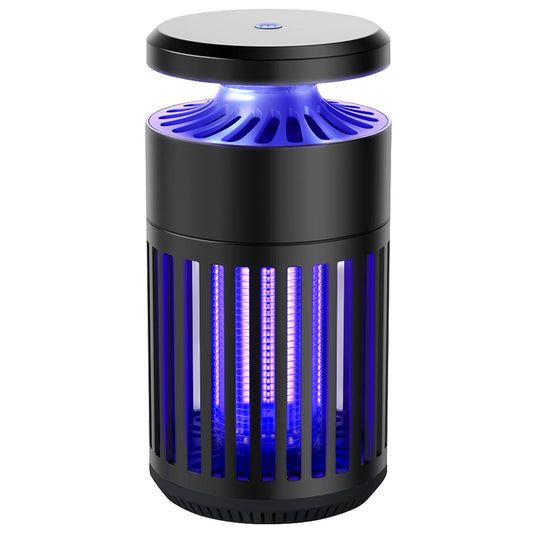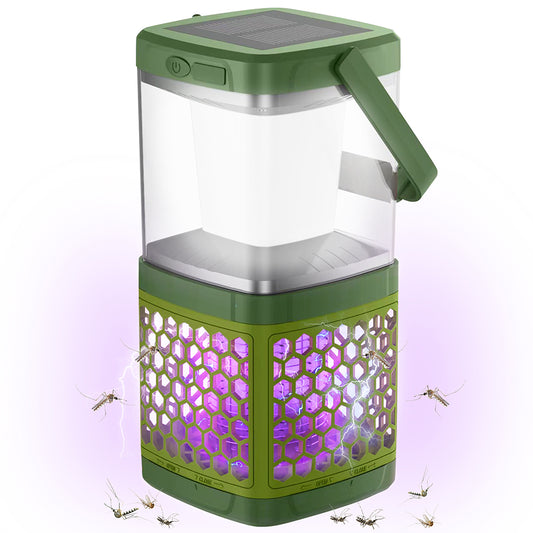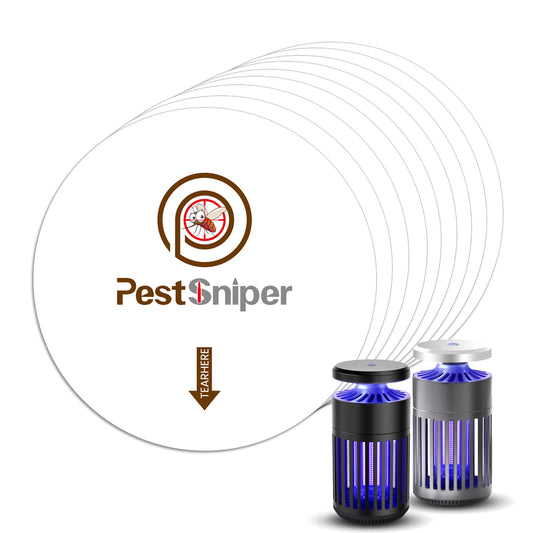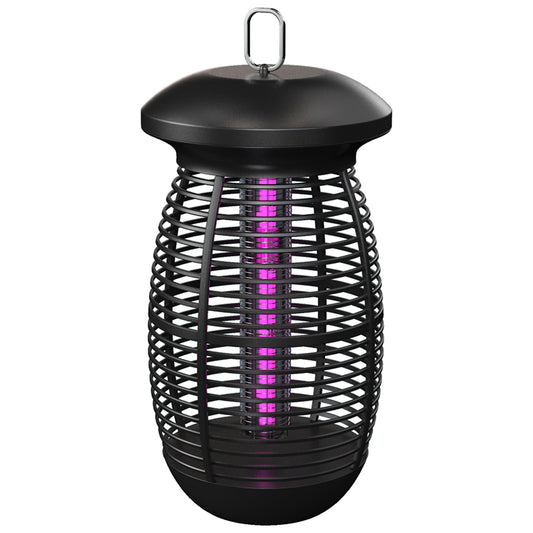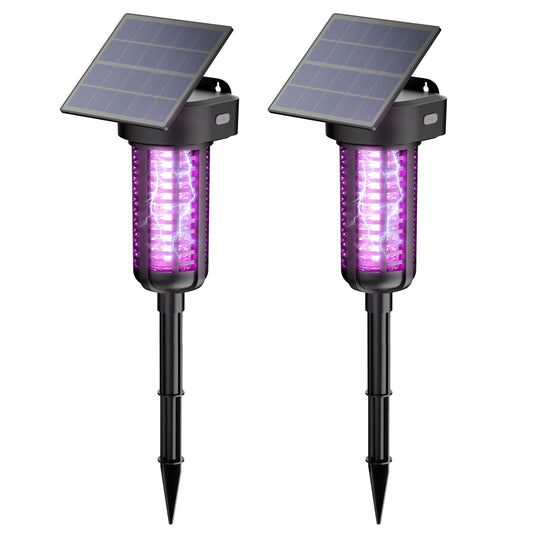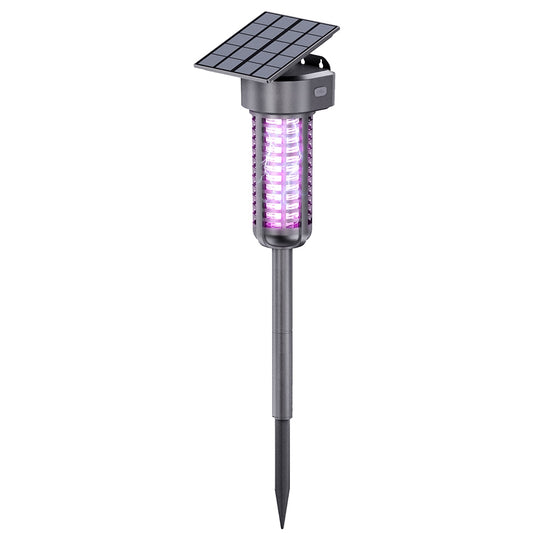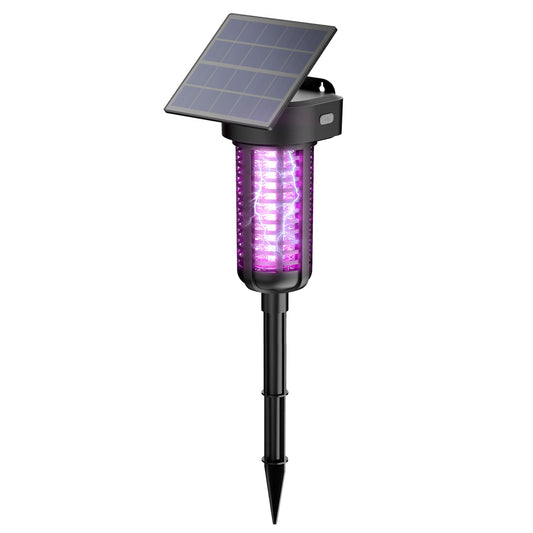How Bug Zapper Work?
Bug zapper, also known as electronic insect control systems, are a popular tool for managing flying insects such as mosquitoes, flies, and moths. These devices are widely used in homes, restaurants, and outdoor areas to reduce the nuisance and potential health risks posed by these pests. Understanding how bug zappers work involves exploring their design, functionality, and effectiveness.
Basic Design and Components:
A typical bug zapper consists of three main components: a light source, an electrified grid, and a housing structure. The light source is usually a fluorescent bulb that emits ultraviolet (UV) light. UV light is particularly effective at attracting flying insects, as many insects are naturally drawn to this wavelength.
The electrified grid surrounds the light source. This grid is made of metal wires and is connected to a high-voltage power source. The voltage used is high enough to kill insects upon contact but low enough to ensure safety for humans and pets. The housing structure, often made of plastic or metal, encases the entire unit, providing protection and sometimes adding aesthetic value.
Attraction and Elimination Process:
The working principle of a bug zapper is relatively simple yet highly effective. The UV light attracts insects towards the device. As the insects fly towards the light, they inevitably come into contact with the electrified grid. Upon touching the grid, the insects complete the electrical circuit, resulting in a high-voltage shock that kills them instantly.
The dead insects then fall into a collection tray or onto the ground, depending on the design of the bug zapper. Some modern models come with a fan that helps to draw insects into the device more efficiently, increasing the kill rate.
Effectiveness and Limitations:
Bug zappers are particularly effective against certain types of insects, especially those that are highly attracted to UV light. This includes many species of flies, moths, and beetles. However, their effectiveness against mosquitoes, which are often a primary target for users, is somewhat limited. Mosquitoes are attracted more by carbon dioxide and body heat than by UV light, so bug zappers might not be as effective in reducing mosquito populations.
Furthermore, bug zappers can sometimes kill beneficial insects, such as pollinators like bees and butterflies, as these insects are also attracted to UV light. This unintended consequence can disrupt local ecosystems and negatively impact plant pollination.
Safety Considerations:
While bug zappers are generally safe to use, there are a few safety considerations to keep in mind. The devices should be placed out of reach of children and pets to prevent accidental contact with the electrified grid. Additionally, it's important to regularly clean the collection tray and the grid to maintain the device’s efficiency and prevent potential fire hazards from accumulated debris.
Advancements and Alternatives:
Advancements in bug zapper technology have led to the development of more sophisticated models that incorporate additional attractants, such as octenol and other chemical lures, to increase their effectiveness against a broader range of insect species, including mosquitoes. Some devices also integrate LED lights, which are more energy-efficient and durable compared to traditional fluorescent bulbs.
For those looking for alternatives, there are various other methods to control insect populations, including insect repellents, traps that use carbon dioxide to attract mosquitoes, and natural predators like bats and birds.
Bug zappers provide a convenient and relatively effective solution for controlling flying insects, particularly in outdoor settings. By leveraging the natural attraction of insects to UV light, these devices can significantly reduce the presence of nuisance pests. However, users should be aware of their limitations and consider complementary methods for a more comprehensive insect control strategy.
Basic Design and Components:
A typical bug zapper consists of three main components: a light source, an electrified grid, and a housing structure. The light source is usually a fluorescent bulb that emits ultraviolet (UV) light. UV light is particularly effective at attracting flying insects, as many insects are naturally drawn to this wavelength.
The electrified grid surrounds the light source. This grid is made of metal wires and is connected to a high-voltage power source. The voltage used is high enough to kill insects upon contact but low enough to ensure safety for humans and pets. The housing structure, often made of plastic or metal, encases the entire unit, providing protection and sometimes adding aesthetic value.
Attraction and Elimination Process:
The working principle of a bug zapper is relatively simple yet highly effective. The UV light attracts insects towards the device. As the insects fly towards the light, they inevitably come into contact with the electrified grid. Upon touching the grid, the insects complete the electrical circuit, resulting in a high-voltage shock that kills them instantly.
The dead insects then fall into a collection tray or onto the ground, depending on the design of the bug zapper. Some modern models come with a fan that helps to draw insects into the device more efficiently, increasing the kill rate.
Effectiveness and Limitations:
Bug zappers are particularly effective against certain types of insects, especially those that are highly attracted to UV light. This includes many species of flies, moths, and beetles. However, their effectiveness against mosquitoes, which are often a primary target for users, is somewhat limited. Mosquitoes are attracted more by carbon dioxide and body heat than by UV light, so bug zappers might not be as effective in reducing mosquito populations.
Furthermore, bug zappers can sometimes kill beneficial insects, such as pollinators like bees and butterflies, as these insects are also attracted to UV light. This unintended consequence can disrupt local ecosystems and negatively impact plant pollination.
Safety Considerations:
While bug zappers are generally safe to use, there are a few safety considerations to keep in mind. The devices should be placed out of reach of children and pets to prevent accidental contact with the electrified grid. Additionally, it's important to regularly clean the collection tray and the grid to maintain the device’s efficiency and prevent potential fire hazards from accumulated debris.
Advancements and Alternatives:
Advancements in bug zapper technology have led to the development of more sophisticated models that incorporate additional attractants, such as octenol and other chemical lures, to increase their effectiveness against a broader range of insect species, including mosquitoes. Some devices also integrate LED lights, which are more energy-efficient and durable compared to traditional fluorescent bulbs.
For those looking for alternatives, there are various other methods to control insect populations, including insect repellents, traps that use carbon dioxide to attract mosquitoes, and natural predators like bats and birds.
Bug zappers provide a convenient and relatively effective solution for controlling flying insects, particularly in outdoor settings. By leveraging the natural attraction of insects to UV light, these devices can significantly reduce the presence of nuisance pests. However, users should be aware of their limitations and consider complementary methods for a more comprehensive insect control strategy.


